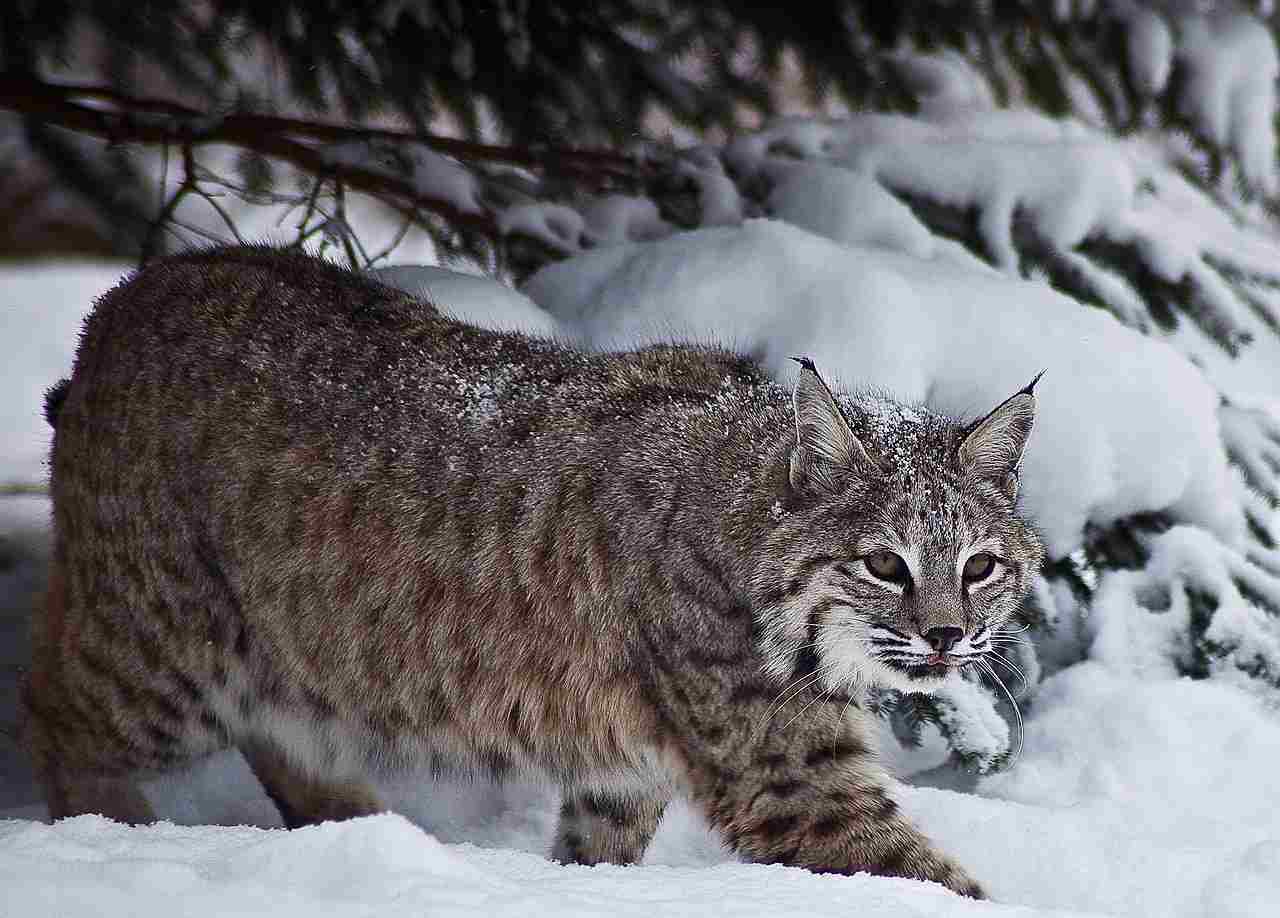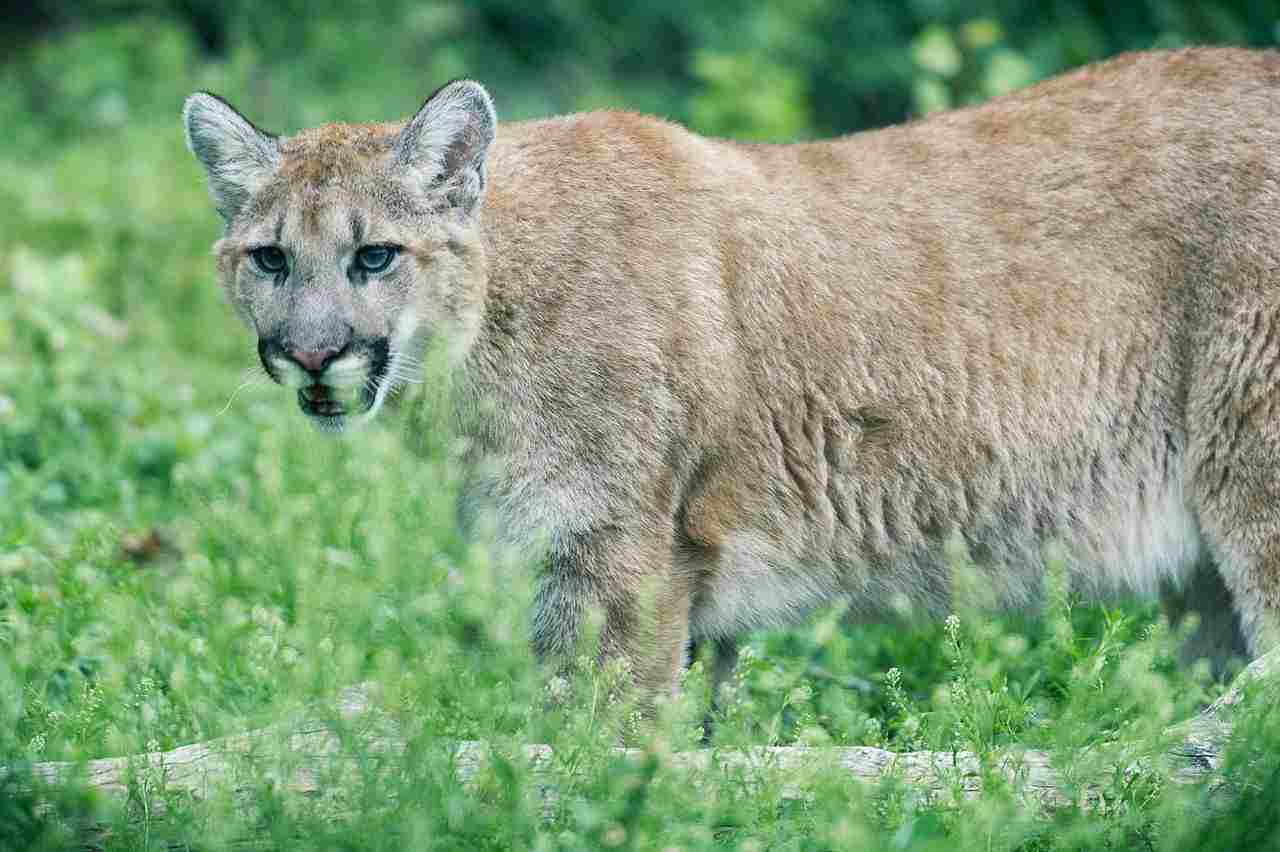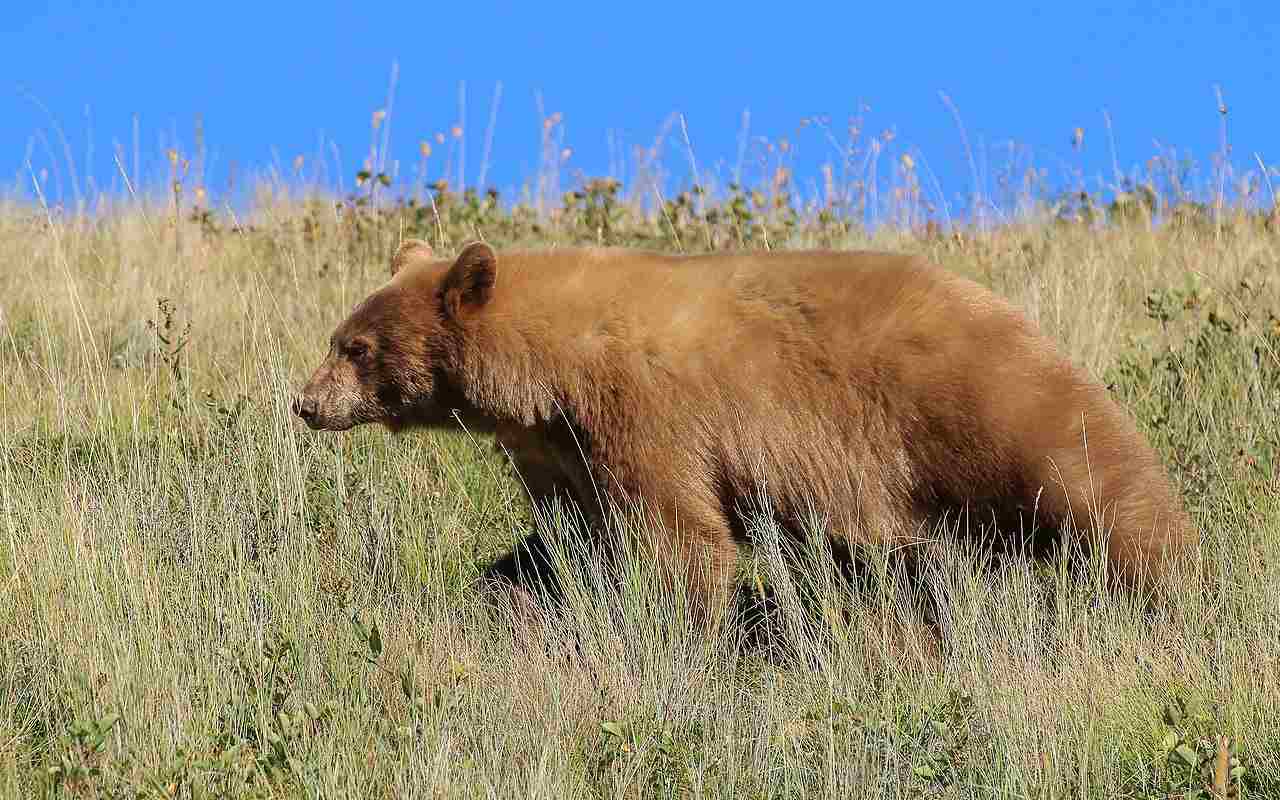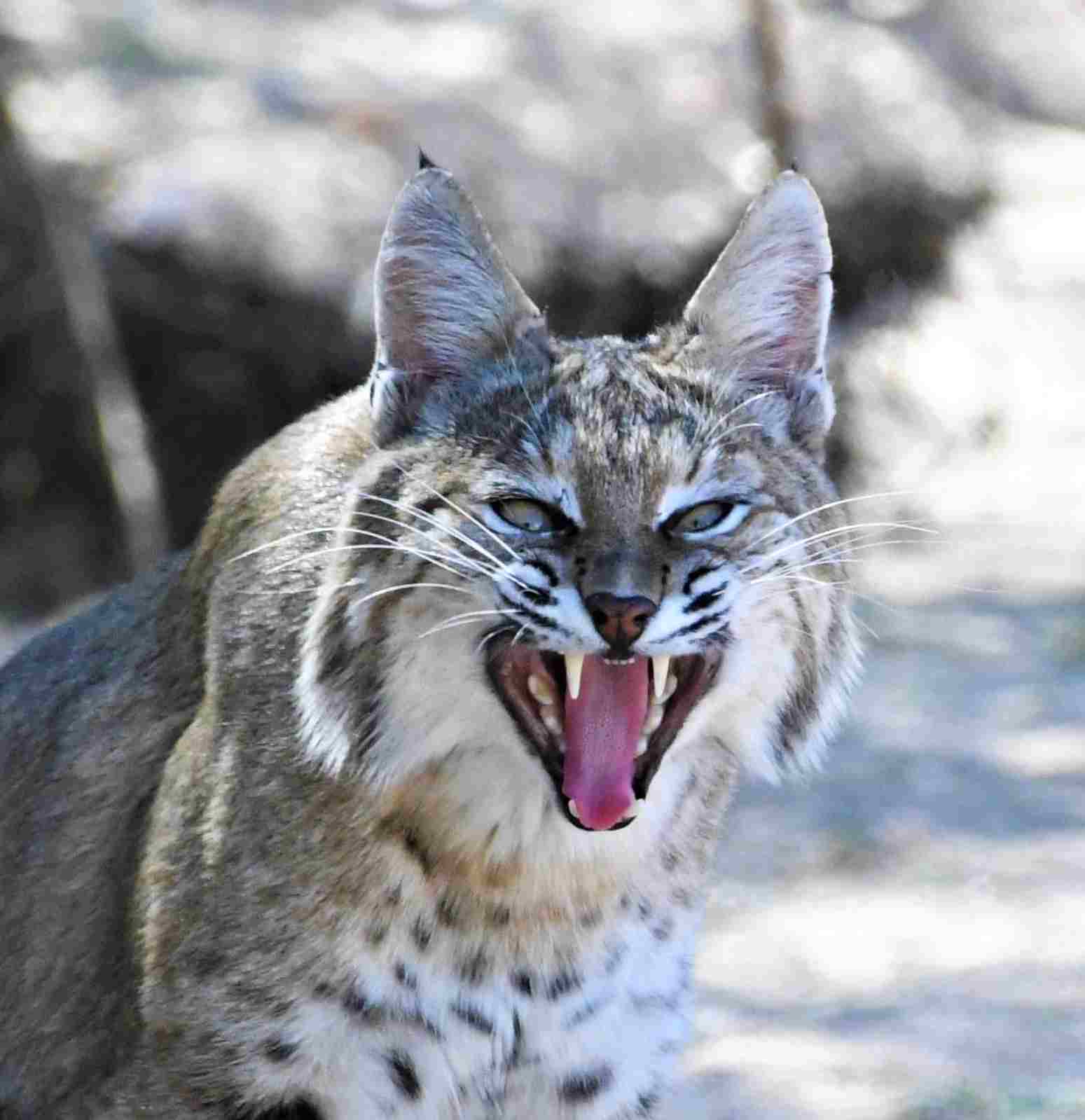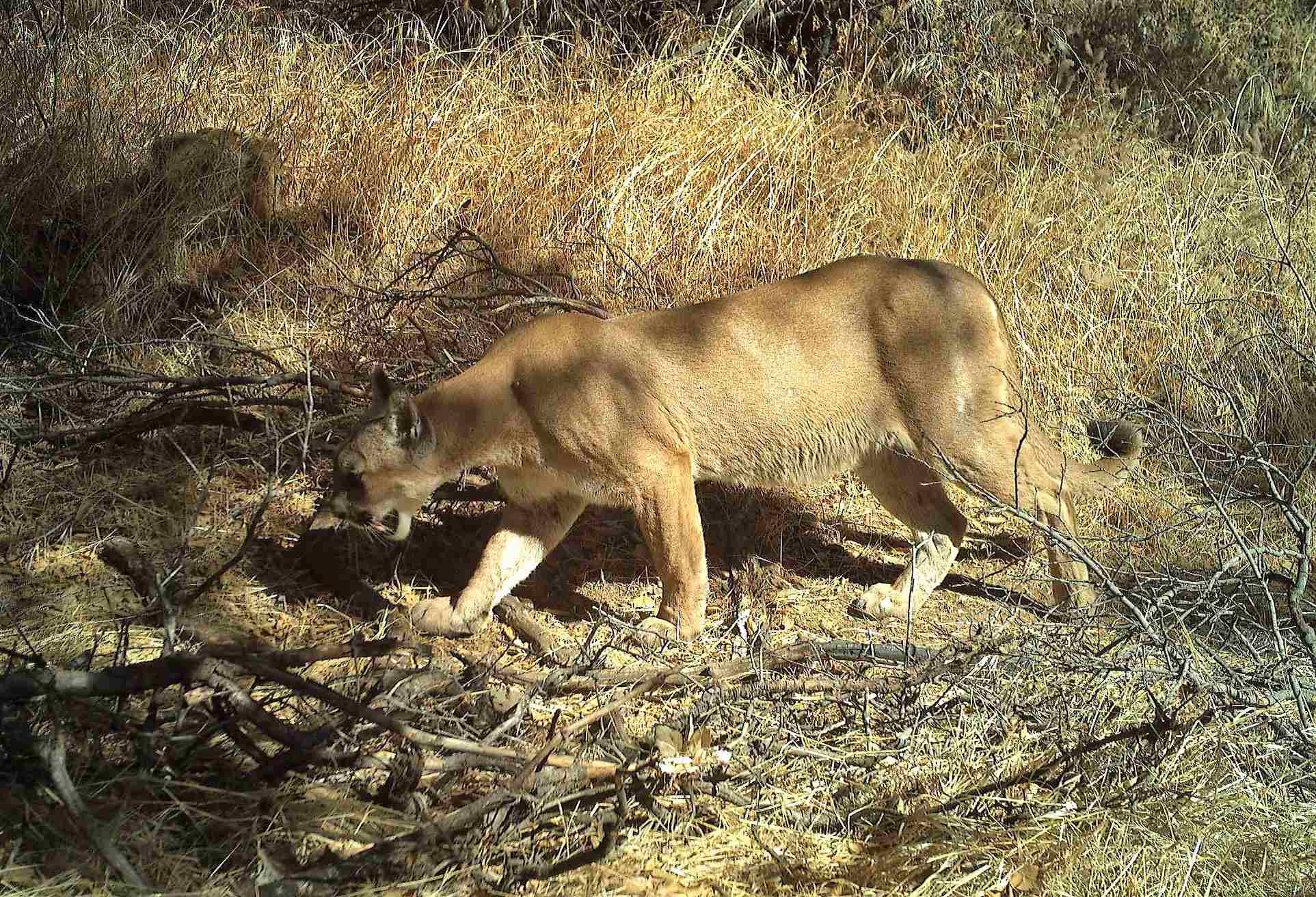Mountain Lion Vs Bobcat Size, Weight, Ecological Comparison
Mountain lions have a clear advantage over bobcats in a physical confrontation due to their larger size and greater strength. With a significantly higher weight and overall physical capacity, mountain lions are more formidable predators.
In this article, we will compare the two felines based on various factors such as taxonomy, appearance, size, weight, speed, agility, bite force, habitat, lifespan, behavior, reproduction, danger posed to humans, intelligence, tracks, and conservation status. By examining these aspects, we can gain a comprehensive understanding of the differences between mountain lions and bobcats.
Reasons Why a Mountain Lion Will Win a Bobcat In a Fight/Physical Confrontation
I). Size and Weight Advantage
One of the main reasons why a mountain lion would win in a fight against a bobcat is its size and weight advantage. Mountain lions are significantly larger and heavier than bobcats, giving them a clear physical advantage.
Adult male mountain lions can reach lengths of up to 8 feet and weigh between 130 to 220 pounds, while adult male bobcats are much smaller, measuring around 3 feet in length and weighing between 20 to 30 pounds. This size difference gives mountain lions the ability to overpower and dominate bobcats in a physical confrontation.
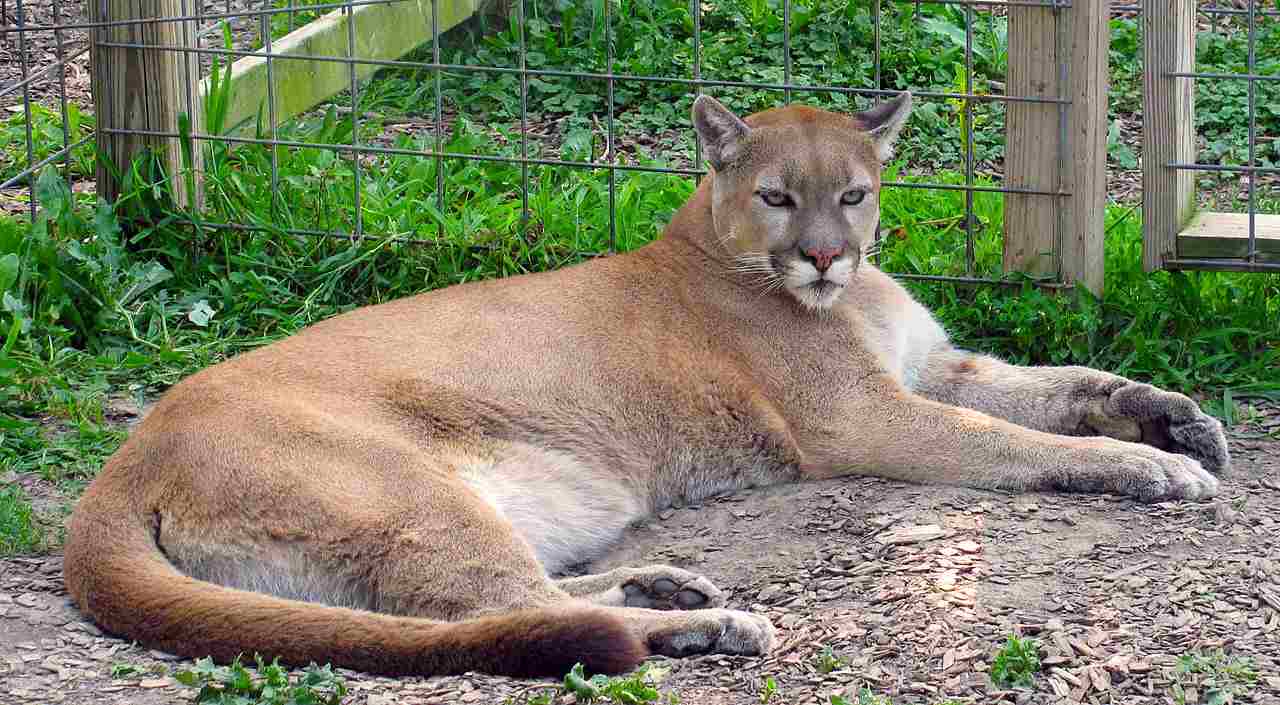
II). Mountain Lions are Much Stronger Than Bobcats
In addition to their size advantage, mountain lions are also much stronger than bobcats. They have more powerful muscles and a greater overall physical capacity, allowing them to deliver stronger and more devastating attacks.
This strength advantage enables mountain lions to take down larger prey and defend themselves more effectively against potential threats. Bobcats, on the other hand, rely more on their agility and stealth rather than sheer strength when hunting or defending themselves.
III). Overall Higher Predatory Capacity
When comparing the overall predatory capacity of mountain lions and bobcats, it becomes clear that mountain lions have the upper hand. Their larger size, greater strength, and more powerful physical attributes make them more formidable predators. Mountain lions have the ability to take down larger prey, such as deer, while bobcats primarily target smaller animals like rabbits and rodents. This higher predatory capacity gives mountain lions a significant advantage in a fight or physical confrontation with a bobcat.
Therefore, the size and weight advantages, along with the greater strength and overall higher predatory capacity of mountain lions, make them the clear winners in a fight against bobcats.
*Details of Comparison
| Feature | Mountain Lion | Bobcat |
| Taxonomy | Puma concolor | Lynx rufus |
| Appearance | Tan/light brown coat, muscular build, large paws |
Spotted/striped coat, smaller size, tufted ears
|
| Size (length) | 6-8 feet | 2-4 feet |
| Weight | 80-220 pounds | 15-35 pounds |
| Speed | Up to 50 mph | Up to 30 mph |
| Agility | Highly agile, climbs well |
Highly agile, good climbers
|
| Bite Force | Up to 1,000 psi | 300-400 psi |
| Overall Physical Capacity | Significantly stronger | Less strong |
| Habitat | Forests, deserts, grasslands |
Forests, swamps, urban areas
|
| Lifespan | 10-14 years | 7-10 years |
| Behavior | Solitary, territorial, aggressive |
More tolerant of others, less aggressive
|
| Reproduction | Litter of 1-6 cubs, 90-96 day gestation |
Litter of 1-6 kittens, 50-70 day gestation
|
| Danger to Humans | More aggressive, potential for attacks |
Less aggressive, unlikely to attack
|
| Intelligence | Highly intelligent hunter, strategic thinker |
Intelligent and adaptable
|
| Tracks | Large (3-4 inches), rounded, triangular pad |
Smaller (1.5-2.5 inches), compact, “m” shaped pad
|
| Conservation Status | Not globally endangered, regional declines |
Stable, some localized declines
|
1). Taxonomy
The taxonomy of the mountain lion (Puma concolor) and the bobcat (Lynx rufus) places them in different genera and species. The mountain lion belongs to the genus Puma and the species concolor, while the bobcat belongs to the genus Lynx and the species rufus.
These two animals have distinct characteristics that differentiate them from each other. The mountain lion is a large cat with a muscular build, while the bobcat is smaller and more compact. The mountain lion has a tan or light brown coat, while the bobcat has a spotted or striped coat that provides excellent camouflage in its habitat.
In terms of taxonomy, the mountain lion and the bobcat are not closely related. The mountain lion is more closely related to other big cats, such as the jaguar and the leopard, while the bobcat is more closely related to other lynx species.
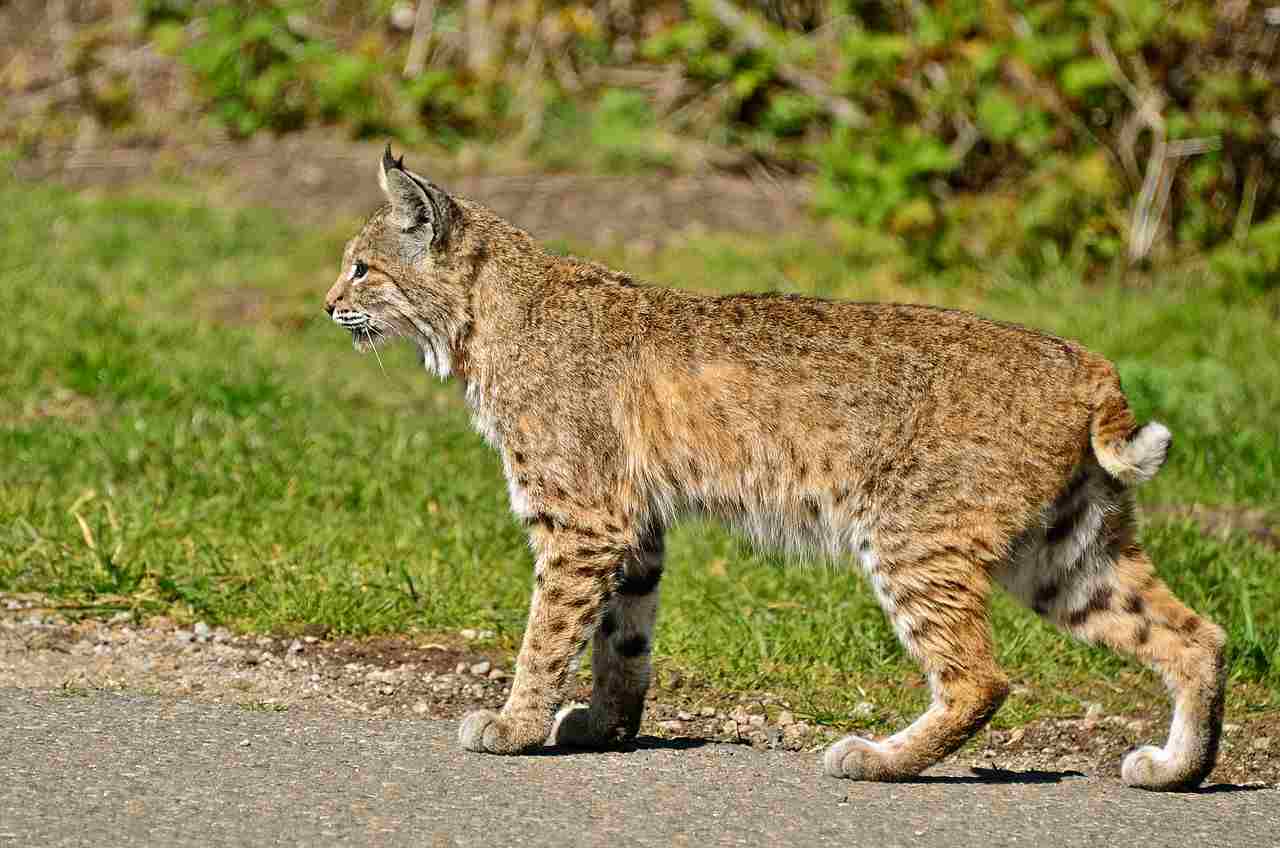
2). Appearance
The appearance of the mountain lion and the bobcat is distinct and can be easily differentiated. Starting with their coats, the mountain lion has a tan or light brown coat, while the bobcat has a spotted or striped coat. This difference in coloration allows the bobcat to blend seamlessly into its habitat, providing excellent camouflage.
In terms of stature and build, the mountain lion is larger and more muscular compared to the bobcat. The mountain lion has a long, sleek body with a powerful build, while the bobcat is smaller and more compact.
When comparing the two animals, it is clear that their appearances are quite different. The mountain lion’s tan or light brown coat and muscular build make it an imposing presence in its environment. On the other hand, the bobcat’s spotted or striped coat and smaller size allow it to blend in and remain inconspicuous.
3). Size
When comparing the size of the mountain lion and the bobcat, there are notable differences in their total body length and height at the shoulders. The mountain lion, also known as the cougar or puma, is significantly larger than the bobcat.
On average, the mountain lion measures between 6 to 8 feet in total body length, with males being larger than females. In terms of height at the shoulders, they can reach up to 2.5 to 3 feet. This impressive size gives the mountain lion a commanding presence in its habitat.
In contrast, the bobcat is smaller in size. They typically measure between 2 to 4 feet in total body length, with males being slightly larger than females. At the shoulders, they stand at around 1 to 2 feet. Despite their smaller stature, bobcats are still formidable predators in their own right.
The significant difference in size between the mountain lion and the bobcat is a result of their distinct ecological roles. The larger size of the mountain lion allows it to take down larger prey and occupy a higher position in the food chain. On the other hand, the smaller size of the bobcat enables it to navigate more easily through dense vegetation and hunt smaller prey.
Therefore, the mountain lion surpasses the bobcat in terms of size, with a longer total body length and greater height at the shoulders.
4). Weight
When comparing the weight of a mountain lion and a bobcat, there is a significant difference between the two species. The mountain lion, being larger in size, also tends to be much heavier than the bobcat.
On average, a mountain lion can weigh between 80 to 220 pounds, with males being larger and heavier than females. Their muscular build and size contribute to their impressive weight, allowing them to take down larger prey and assert dominance in their habitat.
In contrast, a bobcat weighs considerably less. They typically weigh between 15 to 35 pounds, with males being slightly heavier than females. Despite their smaller size, bobcats are agile and skilled hunters, capable of capturing prey that is a significant portion of their own weight.
The difference in weight between the mountain lion and the bobcat is another reflection of their distinct ecological roles. The mountain lion’s larger size and weight enable it to tackle larger prey and exert its dominance in the ecosystem. The bobcat’s smaller weight allows it to navigate more easily through its environment and hunt smaller prey.
Therefore, the mountain lion outweighs the bobcat significantly, with males weighing up to 220 pounds compared to the bobcat’s average weight of 15 to 35 pounds.
5). Speed and Agility
Mountain lions are known for their incredible speed and agility, allowing them to chase down and capture fast-moving prey, as well as to climb with efficiency. With their long legs and powerful muscles, they can reach speeds of up to 50 miles per hour in short bursts. This speed gives them a significant advantage when hunting and evading potential threats.
On the other hand, bobcats are also agile hunters but are not as fast as mountain lions. They have a more moderate speed, capable of reaching speeds of around 30 miles per hour. While not as swift as their larger counterparts, bobcats make up for it with their exceptional agility. They are adept at climbing trees, leaping across obstacles, and maneuvering through dense vegetation, which allows them to surprise their prey and navigate their environment effectively.
The difference in speed and agility between the mountain lion and the bobcat reflects their distinct hunting strategies and ecological roles. Mountain lions rely on their speed to chase down and overpower larger prey, while bobcats utilize their agility to stalk and ambush smaller prey.
6). Bite Force
Mountain lions, being larger and more powerful predators, have a significantly stronger bite force compared to bobcats. With their muscular jaws and sharp teeth, mountain lions can exert a bite force of up to 1,000 pounds per square inch (psi). This immense bite force allows them to easily subdue and kill their prey, even larger animals like deer.
On the other hand, bobcats have a relatively lower bite force compared to mountain lions. While the exact psi of a bobcat’s bite force is not well-documented, it is estimated to be around 300-400 psi. Although not as strong as mountain lions, bobcats still possess a formidable bite that enables them to effectively capture and kill their prey, which primarily consists of smaller animals like rabbits and rodents.
The difference in bite force between these two feline species reflects their distinct ecological roles and hunting strategies. Mountain lions rely on their powerful bite to overpower and immobilize larger prey, while bobcats use their bite force to swiftly dispatch smaller prey.
7). Overall Physical Capacity (Which is Stronger?)
The overall physical capacity of a mountain lion compared to a bobcat is significantly stronger, primarily due to differences in weight, size, and muscle mass. Mountain lions are much larger and more powerful than bobcats, which gives them a clear advantage in a violent confrontation.
In terms of size, mountain lions can reach lengths of up to 8 feet and weigh between 100 to 200 pounds, while bobcats are smaller, measuring around 3 to 4 feet in length and weighing between 15 to 35 pounds. This size difference alone gives mountain lions a greater physical presence and strength.
Additionally, mountain lions have a higher muscle mass, allowing them to exert more force and power in their movements. Their muscular build enables them to take down larger prey, such as deer, with relative ease. On the other hand, bobcats primarily hunt smaller animals like rabbits and rodents due to their smaller size and less powerful physical capacity.
Therefore, when comparing the overall physical capacity of a mountain lion and a bobcat, it is clear that the mountain lion is stronger. Its larger size, greater weight, and increased muscle mass give it a significant advantage in terms of strength and power.
8). Habitat
Mountain lions are found in a wide range of habitats, including forests, deserts, and grasslands. They have a broad geographic range that spans from North America to South America. This adaptability allows them to thrive in diverse environments, from the rugged mountains to the dense forests.
On the other hand, bobcats are more adaptable to different habitats within their smaller geographic range. They are commonly found in forests, swamps, and even urban areas. Bobcats have a preference for areas with dense vegetation, as it provides cover for hunting and protection.
While both species can overlap in certain habitats, mountain lions tend to occupy larger territories due to their larger size and need for more resources. They require vast areas to roam and hunt, which is why they are often associated with more remote and expansive habitats.
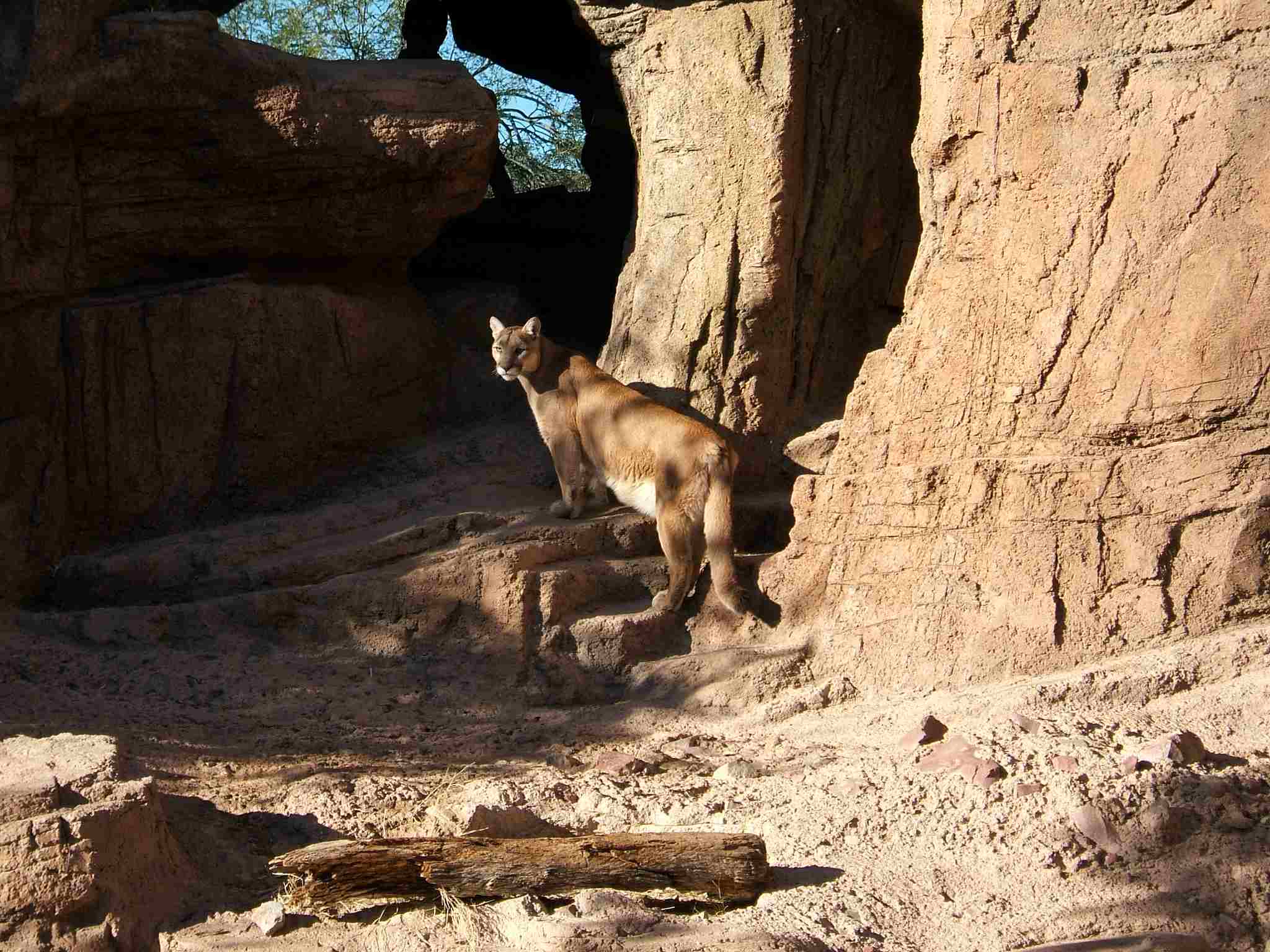
9). Lifespan
Mountain lions generally have a longer lifespan compared to bobcats. The average lifespan of a mountain lion is around 10 to 14 years in the wild, although some individuals have been known to live up to 20 years. On the other hand, bobcats have a shorter lifespan, with an average of 7 to 10 years in the wild.
Several factors contribute to the difference in lifespan between these two species. One factor is their size and position in the food chain. Mountain lions are larger and higher up in the food chain, which means they face fewer predators and have access to larger prey. This allows them to live longer and have a more stable food source. Bobcats, being smaller and lower in the food chain, face more competition for food and are more vulnerable to predation.
Another factor is their reproductive strategy. Mountain lions have a slower reproductive rate, with females typically giving birth to a litter of one to six cubs every two to three years. This slower reproductive rate allows for better parental care and increases the chances of survival for the offspring. In contrast, bobcats have a faster reproductive rate, with females giving birth to a litter of one to six kittens every year. This faster reproductive rate puts more strain on the bobcat population and can lead to shorter lifespans.
10). Behavior
When comparing the behavior of mountain lions and bobcats, several key differences emerge. One significant difference is in their feeding habits. Mountain lions are known for their solitary hunting behavior, often targeting larger prey such as deer. They are stealthy and patient, using their powerful muscles and sharp claws to bring down their prey. On the other hand, bobcats are more opportunistic hunters, targeting smaller prey like rabbits and rodents. They rely on their agility and quick reflexes to catch their meals.
Aggression is another aspect where these two species differ. Mountain lions are generally more aggressive and territorial, especially when it comes to defending their hunting grounds or offspring. They are known to be more confrontational towards humans if they feel threatened. Bobcats, on the other hand, are less aggressive and tend to avoid human contact whenever possible.
Vocalization is another behavior that sets these two species apart. Mountain lions are known for their distinctive screams, which can be heard over long distances. These vocalizations serve as a way to communicate with other mountain lions and establish territory boundaries. Bobcats, on the other hand, have a more varied vocal repertoire, including growls, hisses, and meows.
In terms of social behavior, mountain lions are solitary animals, except during mating season or when females are raising their cubs. Bobcats, on the other hand, have a more flexible social structure and may form loose associations with other bobcats, especially during the breeding season.
When it comes to parenting, mountain lions exhibit more extensive parental care. Females raise their cubs for up to two years, teaching them essential hunting and survival skills. Bobcat mothers also care for their kittens, but the duration of parental care is shorter.
11). Reproduction
Mountain lions are viviparous, meaning they give birth to live young. The female mountain lion undergoes a gestation period of approximately 90 to 96 days before giving birth to a litter of one to six cubs. The cubs are born helpless and rely on their mother for nourishment and protection.
On the other hand, bobcats are also viviparous, giving birth to live young. The gestation period for bobcats is around 50 to 70 days, and the female bobcat typically gives birth to a litter of one to six kittens. Similar to mountain lions, the bobcat kittens are born blind and helpless, and they depend on their mother for care and survival.
In terms of reproduction, both mountain lions and bobcats exhibit similar patterns, being viviparous and giving birth to live young. However, there are differences in the gestation period and litter size. Mountain lions have a longer gestation period and tend to have larger litters compared to bobcats.
12). Danger Posed to Humans
Mountain lions and bobcats both have the potential to come close to human settlements, but their behavior towards humans differs. Mountain lions are generally more aggressive and have been known to attack humans, especially if they feel threatened or if their natural prey is scarce. However, these incidents are rare, and mountain lions typically avoid human contact.
On the other hand, bobcats are generally less aggressive towards humans and are more likely to avoid confrontation. They are elusive creatures and tend to keep their distance from human settlements. While bobcat attacks on humans are extremely rare, they may occur if the animal feels cornered or if it perceives a threat to its young.
In terms of the rate of human deaths caused, mountain lions have been responsible for a few fatal attacks on humans over the years. However, it’s important to note that the number of fatalities is relatively low compared to other causes of death. Bobcats, on the other hand, have not been known to cause any human fatalities.
If you encounter a mountain lion or bobcat, it’s important to take precautions to ensure your safety. Maintain a safe distance, avoid approaching the animal, and do not turn your back on it. Make yourself appear larger by raising your arms and speaking loudly. If the animal approaches, throw objects or make loud noises to deter it.
Therefore, while both mountain lions and bobcats have the potential to pose a danger to humans, mountain lions are generally more aggressive and have been responsible for a few fatal attacks. However, the likelihood of encountering either of these animals and being harmed is extremely low.
13). Intelligence
When it comes to intelligence, both mountain lions and bobcats are highly intelligent predators. They possess a range of cognitive abilities that allow them to survive and thrive in their respective habitats. However, it is difficult to determine which of the two is more intelligent as intelligence can be subjective and difficult to measure in animals.
Mountain lions, also known as cougars, are known for their exceptional hunting skills and adaptability. They are highly skilled at stalking and ambushing their prey, displaying strategic thinking and patience. Mountain lions are also known to exhibit problem-solving abilities, such as navigating complex terrains and finding alternative routes to reach their targets.
On the other hand, bobcats are also intelligent predators with unique hunting techniques. They are skilled at stealth and camouflage, allowing them to blend seamlessly into their surroundings. Bobcats are known for their ability to adapt to various habitats, from forests to deserts, showcasing their resourcefulness and ability to survive in different environments.
While both mountain lions and bobcats demonstrate intelligence in their hunting strategies and adaptability, it is important to note that intelligence can vary among individuals within a species. Factors such as experience, learning, and environmental factors can influence the intelligence of an animal.
In conclusion, both mountain lions and bobcats exhibit intelligence in their hunting behaviors and adaptability to different environments. However, determining which species is more intelligent is subjective and can vary among individuals.
14). Mountain Lion Vs Bobcat Tracks
Mountain lion and bobcat tracks provide valuable insights into the behavior and presence of these elusive predators. When comparing their tracks, there are some key differences to consider.
Mountain lion tracks are larger and more rounded compared to bobcat tracks. They typically measure around 3 to 4 inches in diameter, with four toes and a distinct triangular-shaped pad at the base. The hind tracks often overlap the front tracks, creating a straight line.
On the other hand, bobcat tracks are smaller and more compact. They measure around 1.5 to 2.5 inches in diameter, with four toes and a smaller, more rounded pad. Bobcat tracks often show a clear “m” shape at the base of the pad, which is a distinguishing feature.
In terms of behavior, mountain lions are known for their wide-ranging movements and ability to cover vast distances. Their tracks may be found in various habitats, including mountains, forests, and deserts. Bobcats, on the other hand, have a smaller home range and are more likely to be found in wooded areas or near water sources.
When analyzing tracks, it is important to consider the context and other signs of activity, such as scratch marks on trees or scat. These additional clues can help differentiate between mountain lion and bobcat tracks.
15). Conservation Status
The conservation status of mountain lions and bobcats varies, with both species facing different levels of threat.
Mountain lions are generally not considered endangered or threatened at a global level. However, their populations have declined in certain regions due to habitat loss, fragmentation, and conflicts with humans. In some areas, they are protected and managed to ensure their long-term survival.
On the other hand, bobcats are more resilient and adaptable, and their populations are generally stable. They are not considered endangered at a global level. However, localized declines have been observed in some regions due to habitat loss, hunting, and trapping.
The main threats to the survival of wild populations of both species are habitat loss and fragmentation. As human development expands, it encroaches upon the natural habitats of these animals, limiting their available space and resources. This can lead to increased competition for food and territory, as well as conflicts with humans.
In comparison, mountain lions are generally more vulnerable to habitat loss and fragmentation due to their larger home ranges and specific habitat requirements. Bobcats, with their smaller home ranges and more adaptable nature, are better able to tolerate habitat changes.
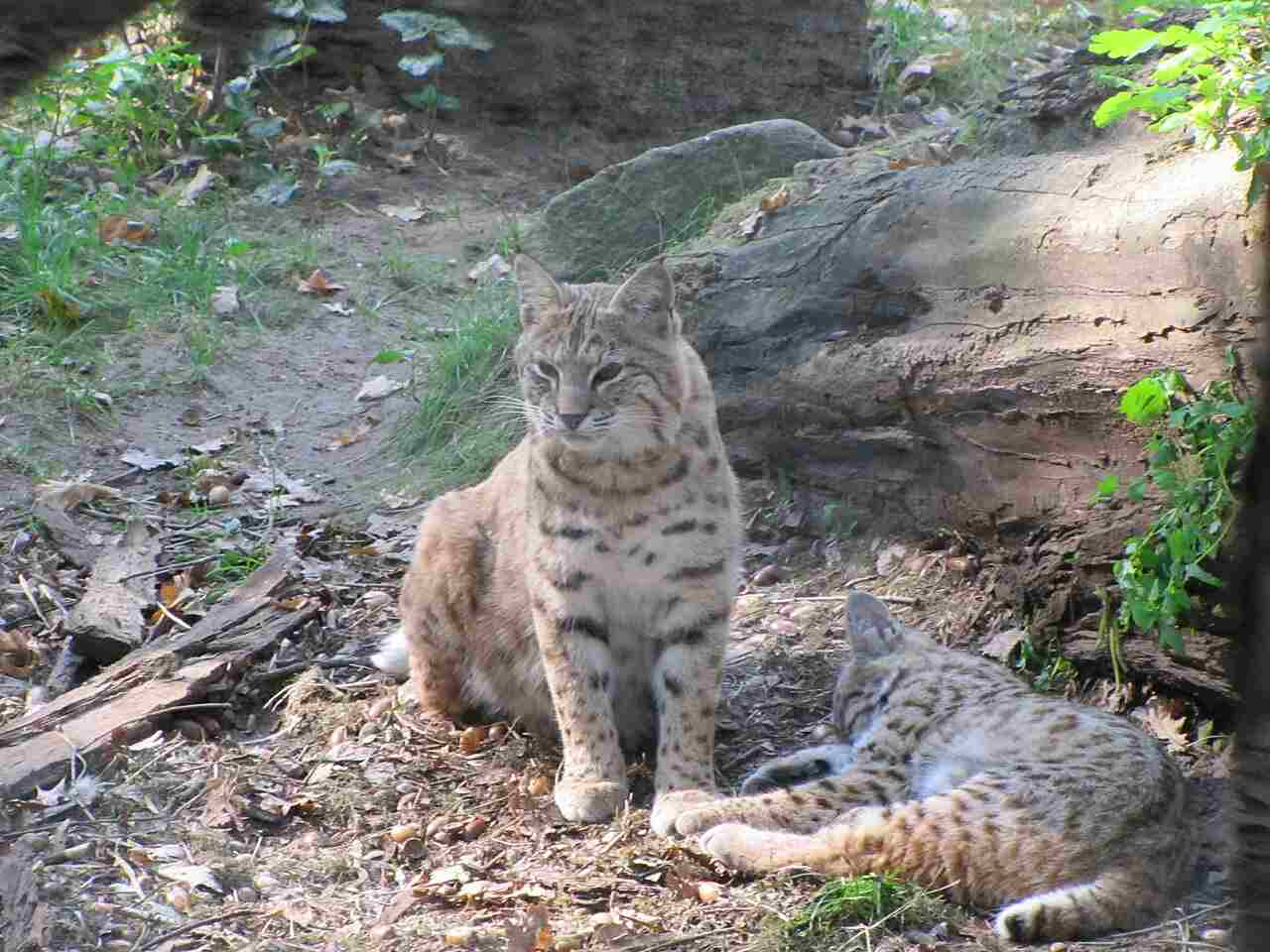
Conclusion
I). SIMILARITIES
In comparing the mountain lion and the bobcat, it is evident that these two animals share some similarities. Both are members of the Felidae family and belong to the same genus, Lynx.
They have similar appearances, with muscular bodies, short tails, and distinctive facial features. Additionally, both species are known for their agility and speed, allowing them to navigate their respective habitats with ease.
II). DIFFERENCES
While there are similarities between the mountain lion and the bobcat, there are also notable differences that set them apart. One significant difference is their size. Mountain lions are considerably larger, with males weighing up to 220 pounds, while bobcats typically weigh between 15 and 35 pounds. Another difference lies in their habitats, with mountain lions preferring a wider range of environments, including forests, deserts, and mountains, while bobcats are more adaptable to various habitats, including forests, swamps, and urban areas.
In terms of behavior, mountain lions are solitary animals, while bobcats are more tolerant of sharing their territory with other bobcats. Additionally, mountain lions have a longer lifespan, with some individuals living up to 12 years in the wild, whereas bobcats typically live for around 7 to 10 years.
